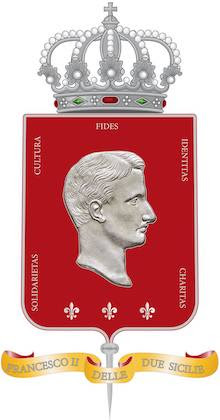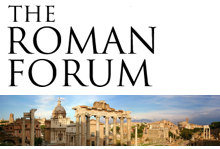Professor Cipolla Presents His New Book
By Giovanni di Napoli
Recently, I had the privilege of attending Professor Gaetano Cipolla's book presentation at the Italian American Museum (155 Mulberry St.), where the esteemed author, educator and president of Arba Sicula spoke at length to a packed audience about his new book, Learn Sicilian/'Mparamu lu sicilianu: A Comprehensive, Interactive Course (Legas 2013).
 Professor Cipolla touched on many interesting facts about the Sicilian language, including how it developed earlier than the other regional languages of Italy (e.g. Tuscan), easily dispelling the popular misconception that Sicilian is a corruption of Italian. He gave us a brief history of the language, beginning with the Court of Holy Roman Emperor Federico II (Frederick II) and the Sicilian School of poetry up until the present.
Professor Cipolla touched on many interesting facts about the Sicilian language, including how it developed earlier than the other regional languages of Italy (e.g. Tuscan), easily dispelling the popular misconception that Sicilian is a corruption of Italian. He gave us a brief history of the language, beginning with the Court of Holy Roman Emperor Federico II (Frederick II) and the Sicilian School of poetry up until the present.
I was aware of the social and political suppression of Sicilian, so I was shocked to learn that the Sicilian Assembly recently passed a law to teach the language in public schools. Unfortunately, I was not surprised that the law has not yet been implemented. Apparently, Sicilian is learned at home among family and friends, while "Italian" (i.e. Florentine) is taught in classrooms. I was also saddened to hear that Sicilians will speak first in Italian to strangers, even other Sicilians, because they do not want to appear uneducated.
 This reminded me of an exchange I once had with a waitress at a Sicilian restaurant in Brooklyn. When I asked her how to properly enunciate something on the menu, she dismissed it as unworthy to pronounce. Instead of answering me, she said with a wave of her hand: "It's bad Italian." I wanted to correct her mistake, but not wishing to antagonize my food handler I dropped it. The scars of northern cultural hegemony run deep.
This reminded me of an exchange I once had with a waitress at a Sicilian restaurant in Brooklyn. When I asked her how to properly enunciate something on the menu, she dismissed it as unworthy to pronounce. Instead of answering me, she said with a wave of her hand: "It's bad Italian." I wanted to correct her mistake, but not wishing to antagonize my food handler I dropped it. The scars of northern cultural hegemony run deep.
Despite these difficulties, Prof. Cipolla is confident the Sicilian language is not in danger of being lost. "The Sicilian people," quoting the critic Licio Zinna, "are becoming more jealous of their language than they are of their women." I'm not sure I share their optimism.
One thing's for certain, this book is an important step in the right direction in helping to prevent that loss. At 336 pages long, it is a welcome addition to Prof. Cipolla's earlier work, The Sounds of Sicilian (Legas 2005) and Dr. J. Kirk Bonner's Introduction to Sicilian Grammar (Legas 2008). It comes with an easy to use interactive audio CD featuring The Sounds of Sicilian, which offers students an opportunity to practice their pronunciation.
According to Prof. Cipolla the volume was designed for the classroom and self-learners. It will provide the linguistic tools and cultural information needed to communicate. The assignments highlight the island's vast history and vibrant culture. Regional geography, cuisine and historical personages are used to help instruct students. Even the Greek myths about Persephone, Odysseus and Daedalus (among others set in Sicily) are featured. Poetry and tongue twisters are used as well.
 |
Professor Gaetano Cipolla
|
Following the lecture, a question and answer period ensued. When asked if he was planning a second book for more advanced students, Prof. Cipolla smiled (alluding to the exhausting work he put into this volume) and said, "let's see how well this book does first." The title was available for purchase and I got my copy. I also picked up one for our friends at H.E.L.P., the Hellenic Education and Learning Program in Astoria (30-96 42nd St.). I think they will enjoy the learning exercises employing the Greek myths. I'm looking forward to begin my lessons.
It needs to be mentioned that Dr. Scelsa, founder and President of the Italian American Museum, has generously donated 20 copies of the textbook to schools in Palermo, matching Arba Sicula's donation.
The conversation continued late into the evening as Prof. Cipolla joined us for dinner at Grotta Azzurra (177 Mulberry St.), a Neapolitan restaurant in the heart of NYC's Little Italy. We had a lively and informative discussion about all things Sicilian.
Many thanks to Prof. Cipolla for his hard work and commitment to our community. We wish him the best of luck and much success with his new book. Of course we cannot forget Dr. Scelsa and the Italian American Museum for hosting this wonderful event. The IAM continues to do a wonderful job organizing events that promote our Southern Italian culture and heritage.
Prof. Cipolla will speak again on April 19th (7:00 pm) at Stony Brook University. The event will be held in the Center for Italian Studies in the Frank Melville Memorial Library, Room E4340. For more info contact: josephine.fusco@stonybrook.edu or visit their website.
Additional reading:
• "Is Sicilian a Language or a Dialect?" by Gaetano Cipolla, Siciliana: Studies on the Sicilian Ethos, Legas, 2005, p. 99-120
• "A Dream Realized: A Modern Grammar of Sicilian Is Now Available," Sicilia Parra, Vol. XXIV, No. 2, Fall 2012, p. 1 and 3










